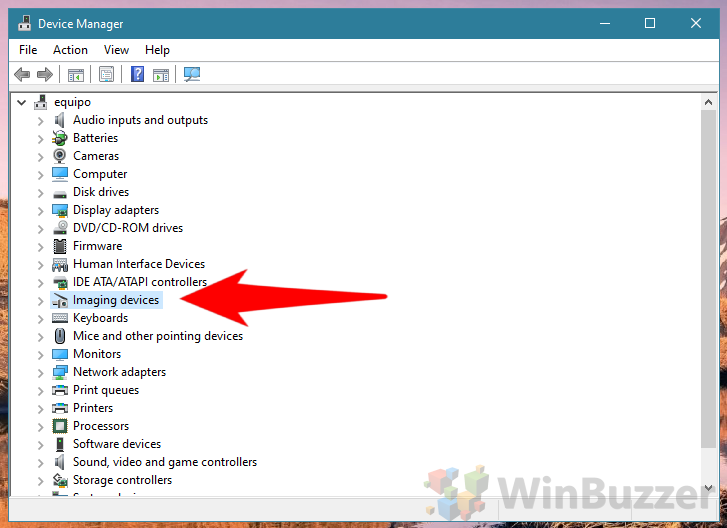

- #WHAT IS DRIVER RESTORE WINDOWS 10 HOW TO#
- #WHAT IS DRIVER RESTORE WINDOWS 10 INSTALL#
- #WHAT IS DRIVER RESTORE WINDOWS 10 UPDATE#
- #WHAT IS DRIVER RESTORE WINDOWS 10 WINDOWS 10#
How to Automatically Backup and Restore DriversĪre the above steps getting a bit too technical for you? No problem because you can simply use DriverFinder (free version!) to backup and restore drivers in less than 60 seconds! Just reboot your computer and check the Device Manager to see if the newly installed driver is active for the device it is intended. Sometimes, you may not get any message whether a driver installation is successful or not. You will again be prompted by the User Account Control to confirm. Simply right-click the INF file and in the popup menu, select Install.
#WHAT IS DRIVER RESTORE WINDOWS 10 INSTALL#
If that is a cause for things to fail, you might want to install some drivers manually first.

In many cases it is recommended to install the chipset drivers before any of the other drivers.
#WHAT IS DRIVER RESTORE WINDOWS 10 WINDOWS 10#
The /subdirs parameter will ensure that all subfolders are also included for available driver INF files, while the /install parameter ensures that any devices that are compatible with the added drivers get installed in the process.Īfter pressing Enter, the command will start adding the driver packages from the specified backup location back into the driver store.Īlthough in most cases installing drivers from a backup into Windows 10 using this method will work, be aware that you have no control over the sequence of the driver installation.

You can also manually reboot the computer afterwards of course. The /reboot is not required, but recommended since driver installation often requires a reboot to complete. Now type the following command -> PnPutil /add-driver “ C:DriverBackup*.inf” /subdirs /install /rebootĪgain, change the C:DriverBackup path to where your driver backup is located. Open a Command prompt with administrator rights (right click the command prompt icon and in the popup menu, select Run as administrator). This is a command line tool to perform actions on driver packages, and it is included in all Windows versions, starting with Windows Vista. So the tool to use to install drivers from a driver backup location into Windows 10 is called PnPutil. The limitation of that however, is that you can only add drivers to a Windows Image file using this method. Once there, they can be used to install devices that match those drivers.Īs expected there is an option to add drivers using the DISM tool that was described earlier to create a back up. To install drivers from a back up to a Windows 10 installation, you need to load all the driver packages back into the driver repository. How to Install Drivers from a Backup in Windows 10 Once the command completes it will show a message stating “ The operation completed successfully.”Īfter that, you can type Exit and press Enter to close the PowerShell. This can take a bit, depending on the number of drivers and the speed of your destination location. Press Enter after typing the command, and then wait for the operation to complete. Make sure it is an existing, valid path, or the command will not work. You can change this to the backup location for your drivers. In this PowerShell windows, type the command -> DISM / Online /Export-Driver /Destination: C:DriverBackupĬ:DriverBackup in this example is the destination location for the driver backup files. You will first be prompted by the User Account Control to confirm starting the PowerShell with admin rights.

This will open a new PowerShell window (similar to a command window). Right-click the Windows Start button, and in the Start menu, click Windows PowerShell (Admin). So getting a copy of only the installed third party drivers can make sense.įor this driver backup method, you will need to start the Windows PowerShell with administrator rights.
#WHAT IS DRIVER RESTORE WINDOWS 10 UPDATE#
Windows will install any directly supported devices automatically from the installation location, or from the Windows Update service. This will make a backup of all third-party drivers. Manually Back Up Drivers Using the Deployment Image Servicing and Management Tool (DISM)Īnother method to manually backup drivers in Windows 10 is to use the DISM tool. That way you can make sure there is enough space available in the backup location. Keep in mind that the DriverStore folder can be large (several GB), so it is a good idea to right-click it first and select Properties to see the size. Use File Explorer and navigate to C:WindowsSystem32 folder, locate the DriverStore folder, and then right-click it to Copy it.Īfter that, navigate to a backup location (a USB stick or external drive is a good idea), and then right-click the storage location and select Paste. This folder is located in C:WindowsSystem32 (assuming the C: drive is your system drive). To manually backup driver files in Window 10 is to simply copy the DriverStore folder. How to Automatically Backup and Restore Drivers Manually Back Up Drivers Using ‘DriverStore’


 0 kommentar(er)
0 kommentar(er)
